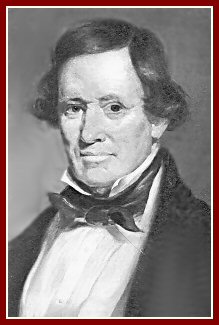A 1986 book, “The Hot Sauce Bible,”
recites:
“[1849]
marked the first recorded crop of tabasco chiles, the vital ingredient of
McIlhenny Company’s Tabasco Pepper Sauce. That crop was grown by a prominent Louisiana
banker and legislator, Colonel Maunsell White on his Deer Range Plantation. The
New Orleans Daily Delta printed a letter from a visitor to White’s plantation,
who reported, ‘I must not omit to notice the Colonel’s pepper patch, which is
two acres in extent, all planted with a new species of red pepper, which
Colonel White has introduced into this country, called Tobasco red pepper. The Colonel
attributes the admirable health of his hands [i.e., slaves] to the free use of
this pepper.’ Tobasco was an early misspelling of Tabasco,
the Mexican state.
“Colonel
White manufactured the first hot sauce from the ‘Tobasco’ chiles and advertised
bottles of it for sale in 1859. About this time, he gave some chiles and his
sauce recipe to a friend, Edmund McIlhenny, who promptly planted the seeds on
his plantation on Avery
Island
[in Louisiana].”
(White—whose
title was derived from his service in the Louisiana
militia—usually spelled his first name with one “l,” but sometimes with two.)
A great-great grandson of Col. Maunsel White,
also bearing the moniker Maunsel White, told me his ancestor gave away tobasco
seeds to many, seeking to promote use of tobasco plants for their therapeutic
value.
He
pointed to a Jan. 26, 1850 article in the New Orleans Daily Delta which
reported:
“Col.
White has introduced the celebrated tobasco red pepper, the very strongest of
all peppers, of which he has cultivated a large quantity with the view of
supplying his neighbors, and diffusing it throughout the state.”
The
article went on to say:
“Owing
to its oleaginous [oily] character, Col. White found it impossible to preserve
it by drying; but by pouring strong vinegar on it after boiling, he has made a
sauce or pepper decoction [extract] of it, which possesses in a most
concentrated form all the qualities of the vegetable. A single drop of the
sauce will flavor a whole plate of soup or other food. The use of a dedoction
like this, particularly in preparing the food for laboring persons, would be
found exceedingly beneficial in a relaxing climate like this. Col. White has
not had a single case of cholera among his large gang of negroes since the
disease appeared in the south. He attributes this to the free use of this
valuable agent.”
In his 1992 book, “Peppers, a Story of Hot Pursuits,”
published by Alfred A. Knopf, journalist Amal Kumar Naj wrote of a woman named
Sallie Huling, “who was about twenty-five years old when Edmund is supposed to
have concocted his sauce.”
Naj
wrote:
“[She]
often stopped by at Deer
Range
to see the Whites and their four children. She would later testify that she had
heard on her visits that ‘a Mr. McIlhenny had come down to Deer Range’ and that
Maunsel White gave him ‘a number of pods of pepper, and also gave him the
secret process’ for making the sauce.”
On its website, the McIlhenny Co. makes
no mention of White. Its version is simply this:
“According
to family tradition, founder Edmund McIlhenny obtained some hot pepper seeds
from a traveler who had recently arrived in Louisiana
from Central America.
McIlhenny planted them on Avery
Island,
and then experimented with pepper sauces until he hit upon one he liked.”
Shane
K. Bernard, an historian and the curator of the McIlhenny Co. Archives, said in
a telephone interview that there’s no hard evidence of a link between White’s
extract and the condiment McIlhenny fashioned.
It’s
not known if they used the same pepper—the term “tabasco” then being widely
applied even to non-peppers—and, in any event, White’s sauce was boiled, rather
than being fermented as McIlhenny’s sauce has been from the outset, he said.
However,
in an e-mail Monday to me and to White, Bernard, who is charged with separating
fact from lore about Tabasco Sauce, made some major concessions.
There
will be more about that next week.
Copyright 2004, Metropolitan News Company
